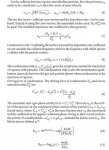Yes... Correlations. Let me guess, you think that all correlations are "one-sided" too? Or do you simply not know what "correlation" means?
Actually, if you had bothered to read the full section, you'd see that is not correct. They discuss Pruppacher and Klett; Brian Tinsley; Palle Bago and Butler; Laken; Rohs; Carlslaw; Usokin and Kovaltsov... etc
Wow. You showed me.
Oh, wait. The cutoff date for the latest IPCC assessment was
MARCH 2013. Your links are from
2016. Was the IPCC supposed to travel forward in time to give Svensmark some more slack?
And when they did so, were they supposed to
ignore all the papers written after 2013, which
reject Svensmark's theory? Do you really need me to link to the half dozen or so papers that do so? Oh wait, I already did. IN A RESPONSE TO YOU. (
https://www.debatepolitics.com/envi...crs-clouds-and-climate-74.html#post1068268383)
Unsurprisingly, you apparently don't actually understand what you're reading. Its claim is that
organic compounds (mostly from trees) may have gone into the atmosphere, and formed clouds/aerosols. They discussing
pre-industrial periods, because human beings have thrown so much sulphuric acid into the atmosphere, that mechanism no longer works. Oops.
Ironically, the 2nd article... Oh wait, all it does is summarizes your first link. If you had bothered to read it. Oops.
We should also note that even given your misunderstanding of the article, there are still numerous issues researchers have found with Svensmark's work, which that article doesn't resolve -- e.g. failed correlations, failed predictions, lab experiments to the contrary, empirical evidence to the contrary.... But hey, any port in a storm.



